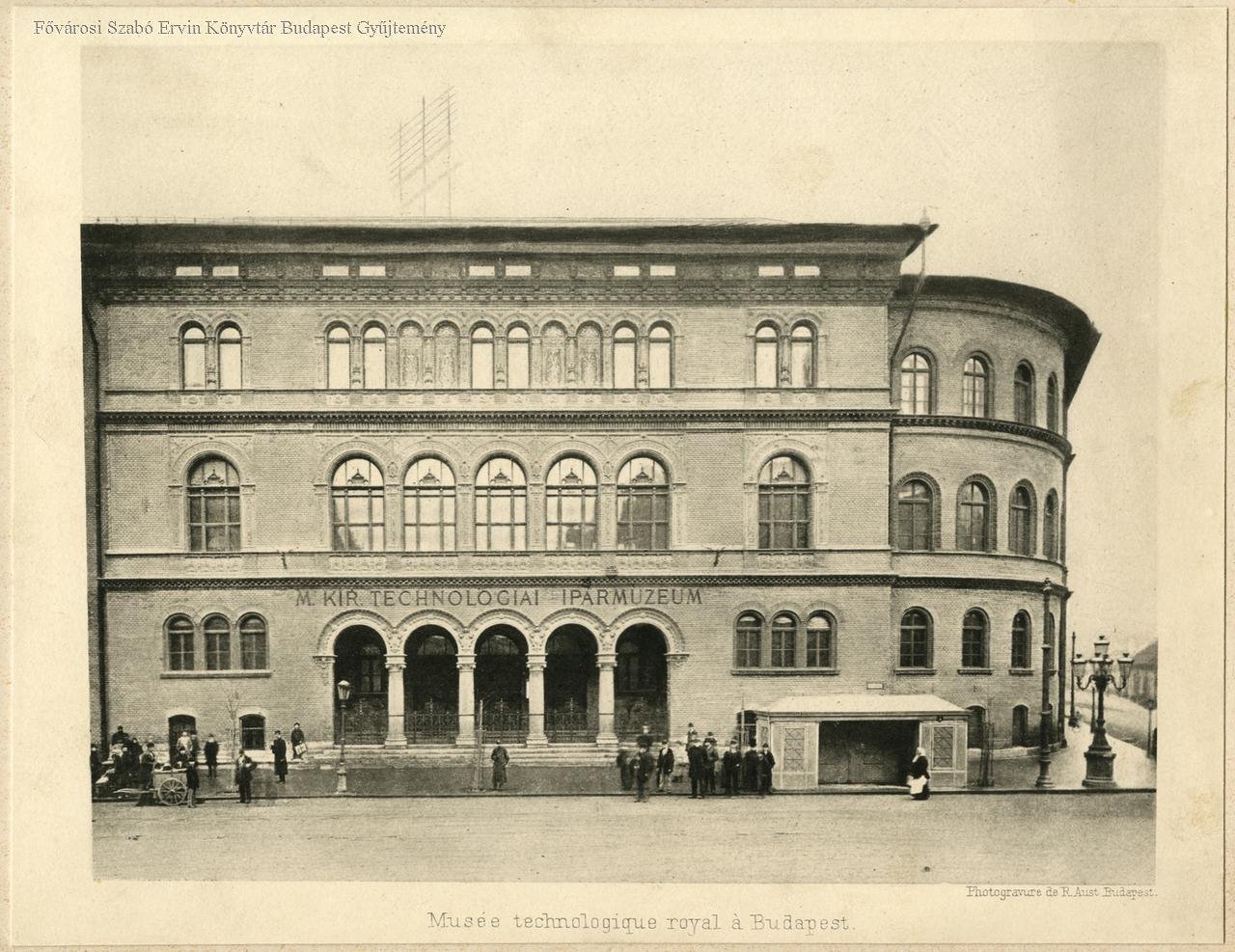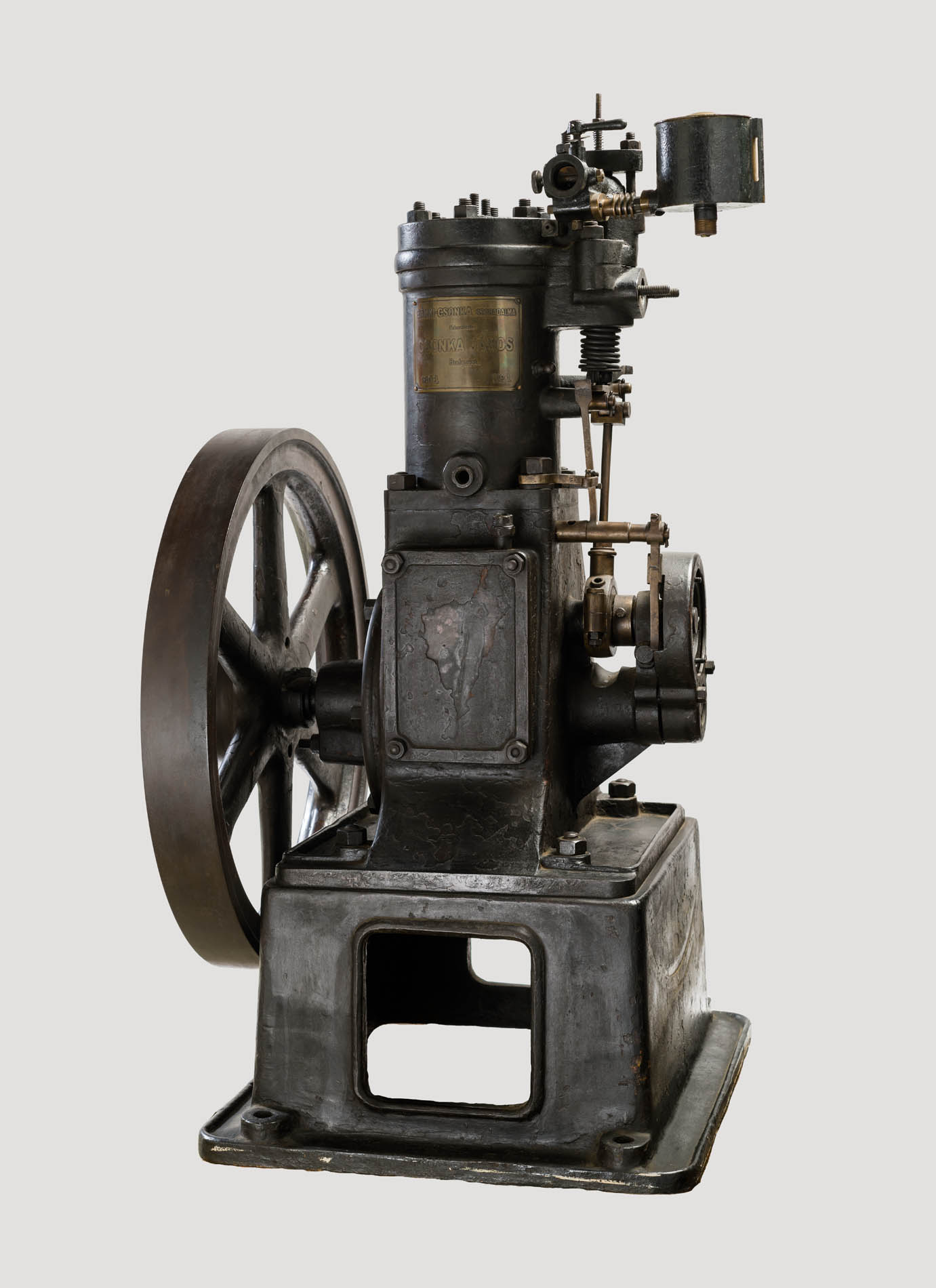The founding of the National Museum of Technology fifty years ago raises some questions, primarily why such a museum had to be founded for the third time, and on the other hand, where is the National Museum of Technology located and where can people visit it? Regarding the latter question, the National Museum of Technology has been part of The Hungarian Museum of Science, Technology And Transport since 2009, the huge collection is of course there, but Pestbuda now will explain the framework within which it is now displayed. But first, take a look at the answer to the first question, i.e., why was it necessary to form the museum three times?
The first Museum of Technology was founded 140 years ago, on 24 June 1883, and operated in a building on Kerepesi (now Rákóczi) Road. A few years later, the Museum of Technology Industry at that time moved to its own headquarters built on the basis of Alajos Hauszmann's plans, on the corner of József Boulevard - Népszínház Street. In fact, this was not even the first national museum-level technical collection, as the Technology Department of the Hungarian National Museum was established in 1808, and part of its collection was given to this new institution.
However, the independent Museum of Technology Industry changed its profile very quickly, as material testing was included in the institution's tasks, and therefore it became its main profile. In 1927, the Museum of Technology Industry was officially transformed into the Technology and Materials Research Institute, and its collection was distributed among industrial vocational schools.

The then Museum of Technology Industry at the beginning of Népszínház Street (Photo: FSZEK Budapest Collection)
After a break of a few years, the National Hungarian Museum of Technology was founded in 1935 under the organisation and management of the engineer and historian of technology Ede Lósy-Schmidt. The premises made available to the museum in Mészáros Street, in the former management building of the Southern Railway, soon proved to be insufficient. Although the collection took up more and more space, in 1939 the MÁV (Hungarian State Railways) needed the entire building, including the rooms that had been handed over until then, so the museum had to move. At that time, the decision was made that the museum should be moved to the countryside, in order to invigorate the cultural life in the countryside. The chosen city was Kassa (Košice, Slovakia), which returned to the motherland not long before, along with the southern part of the Highlands. The museum, therefore, moved to Kassa. However, Kassa was lost again in 1944, and the entire museum material remained there. This collection became the basis of today's Slovak Technical Museum.
After the war, there was no technical museum in Hungary again. For the protection of technical monuments, the Technical Monuments Collecting and Registering Group was established within the Ministry of Culture by Decree No. 4 of 1954, which registered the technical monuments to be declared protected. At that time, there was no question that these items would be collected, the legislation said the following:
"4. §. (1) The technical monument must be preserved in its original state. An object declared as a technical monument may be disposed of by its owner or possessor only in a manner determined by the Minister of Culture. (2) The object declared as a technical monument may not be destroyed, damaged, altered in whole or in part, alienated without the permission of the Minister of Culture, transported to another place, taken out of the country, or seized during enforcement proceedings. 5. §. The Minister of Culture can arrange for the placement of the technical monument in a museum."

The first Hungarian computer, MESZ1, in the collection of the Technical Study Store (Photo: MMKM)
This working group came under the Minister of Culture, and not only the registration of artefacts to be protected locally, but also the collection work began. In 1964, a warehouse and office building was erected for the collected objects in the 11th District, at the intersection of Prielle Kornélia and Kaposvár Street. At first, the warehouse building was also used for exhibitions, but it slowly filled up and was no longer open to visitors.

The first carburetor, the Bánki-Csonka No. 1, in the collection of the Technical Study Store (Photo: MMKM)
On 1 January 1973, the National Museum of Technology was formed from this working group - which had collected 8,000 objects until then. Many ideas were created about the institution, its operation was carefully prepared, and the Association of Technical and Natural Science Societies (MTESZ) organised a special conference about it in the summer of 1972. The government decision on the establishment of the museum (Decree No. 1043/1972. (VI. 9.) of the Council of Ministers) said:
"The task of the museum is to research the general development and social shaping role of natural science and technology, the connections between scientific knowledge and production, and to collect, scientifically process and present the related memorabilia. During its activities, the museum pays special attention to the Hungarian aspects of the history of technology and science."
Although the museum was created and, according to the decision, it had to present the collected material, the new institution did not have one thing: an exhibition space. After the establishment, the work continued, in the 1980s, another three-story warehouse building was built for the huge material on the Kaposvár Street lot, but the museum was still open to visitors only on special occasions. In the meantime, the material kept increasing, not only the number of objects collected increased, but also the number of locations, because after the regime change, a good number of industrial or professional museums created by socialist industrial companies were also transformed, and several of these were transferred to the National Museum of Technology, as the Museum of Metallurgy in Miskolc, the Museum of Chemistry in Várpalota, the Museum of Aluminum Industry in Székesfehérvár, and the Foundry Museum and the Museum of Electrical Engineering in Budapest.
The "Mobileum" in the Technical Study Store (Photo: MMKM)
For the placement of the National Museum of Technology, many ideas have come up over the decades, where and how to place and make visible the huge collection, which now includes 22,000 artefacts, which preserves such treasures as, for example, Ányos Jedlik's electric motor created in 1828 or his electric car made in 1855 (which is probably the world's first electric vehicle), the world's first carburetor, the first Hungarian computer, and the very first Gömböc.
However, the long search was unsuccessful, so a kind of half-solution was created in 2006-2007, because then three warehouses were made open to the public by rearrangement of the warehouses and a small amount of remodelling, the Technical Study Store was opened, and these rooms have been open to the public ever since.
An electric car made by Ányos Jedlik in the collection of the Technical Study Store (Photo: MMKM)
Today, the museum, i.e., the MMKM Technical Study Store, is part of The Hungarian Museum of Science, Technology And Transport, as mentioned. At the moment, like most museums, it is on a winter break, but it is expected to be open again from 1 February in the 11th District, under 10 Prielle Kornélia Street (the visitor entrance opens from here, not from Kaposvár Street), information can be found on the museum's website (kozlekedesimuzeum.hu). (The other member institutions of the museum are also on winter break, and the Foundry Museum, now known as the Ábrahám Ganz Foundry Collection, is closed for technical reasons.)
Cover photo: One of the halls of the Technical Study Store today (Photo: MMKM)




































Hozzászólások
Log in or register to comment!
Login Registration